On our last day in Alsace, we drove South of the region to the picturesque site of Ferrette in the spring. This area is known as the Sundgau and extends from Mulhouse to the Swiss border in Lucelle.
This month, the village of Ferrette was nominated as one of the 22 Best Loved Villages of France (Les Villages Préférés des Français), a popular TV programme by French channel France 2 presented by Stéphane Bern. We wanted to see what was so attractive in the village, and here are our best shots…
This is Ferrette in the Spring!
It was Springtime when we visited Ferrette (Pfirt in German). The visit started from the car park in front of the church where the steep main street leads up to the castles in ruins.

The church
The parish church of Ferrette is dedicated to St. Bernard-de-Menthon, whose statue is featured in the tympanum of the central door. The saint is seen holding a model of the church.

Next to the church is the presbytery, the house where the Catholic priest resides.
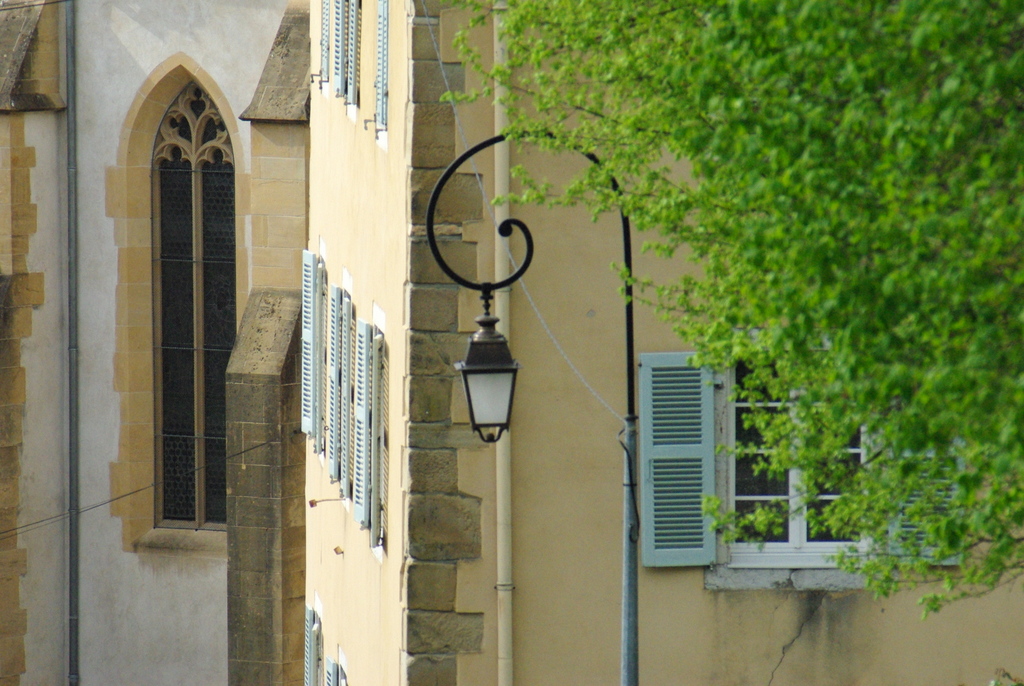

Further up lies the little medieval garden opposite a curious calvary with a Christ sheltered by a roof.





The high street
The paved high street is lined by fine houses, some half-timbered, others in Renaissance style.






The red-coloured Renaissance façade of the town hall features mullioned windows and the coat of arms of the county of Ferrette, two fish and the Habsburgs, who possessed the little town and the Sundgau from 1324 to 1648.

Interestingly, today, the title of Count of Ferrette is held by the prince of Monaco due to the marriage of his Grimaldi ancestor to the heiress of the Mazarins in 1777.
Place des Comtes
The steep main street reaches a charming little square: place des comtes.



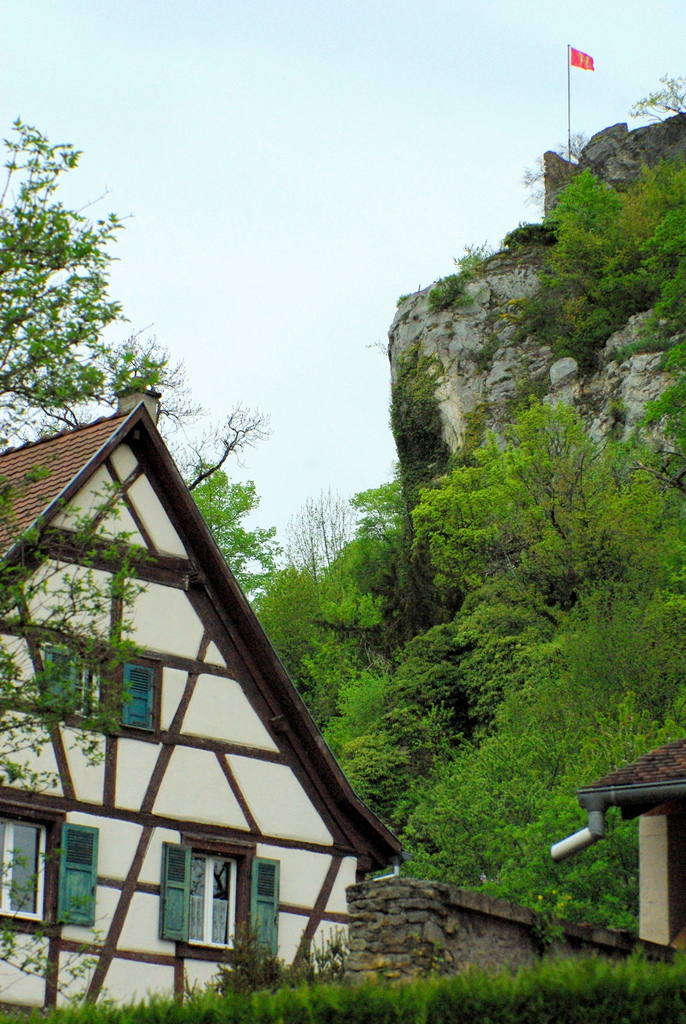

The access to the castles is still paved with the original cobblestones of the Middle Ages. From the village, the steep path goes under a gatehouse.

The two castles of Ferrette in the spring
The first mention of Ferrette Castle dates back to 1105, when it belonged to the Counts of Montbéliard. One of them, Frédéric 1st, inherited the domain and made it his residence around 1125. He took the name ‘Count of Ferrette’ from the nearby village. During the Middle Ages, his county became one of the most powerful in Upper Alsace. In 1324, Jeanne de Ferrette, the daughter and heiress of the last count of Ferrette, married Albert II of Habsburg, who had possessions in Austria and along the Rhine River.
The castle was restored around 1446, rebuilt in 1488 and considerably enlarged in 1552-53. Between 1571 and 1615, the fortress was restored by the archdukes of Austria to adapt it to firearms.
In 1635, during the Thirty Years’ War, the French army set the upper castle on fire. Ferrette and its castle became French in 1648 at the signature of the Treaty of Westphalia. Louis XIV rewarded Mazarin in 1659 with several fiefdoms, including Ferrette.
In 1789, Revolutionaries from the Thur Valley destroyed the lower castle, which was permanently abandoned. The castle was listed as a historic monument by the French State in 1842.
The “Château Bas” (lower castle)
The main entrance to the lower castle goes under a semicircular arch restored in 1977.
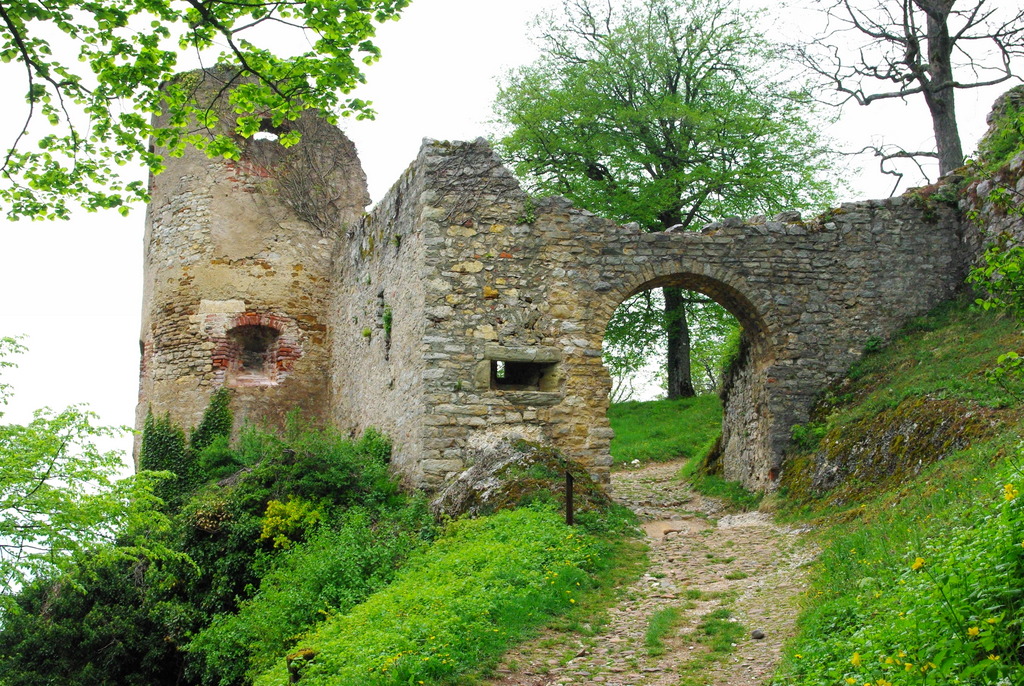


The first castle is the “Château Bas” (lower castle), built around the 12th century keep tower in 1488. It was a forward post for the “Château Haut” (upper castle). Initially, there were four corner turrets intended for firearms. The bases of three of them are still standing, and the fourth one was replaced by the St. Catherine Chapel, built around 1660 to replace the original one in the upper castle and destroyed by a fire in 1635.

Around 1600, the fortress was the bailiff’s residence and tax-collector of the fiefdom and included four rooms, seven bedrooms, two kitchens, a stable for three horses, a stove and granaries.


The view from the castle
From the lower castle, there is a fine view of the rooftops of Ferrette.


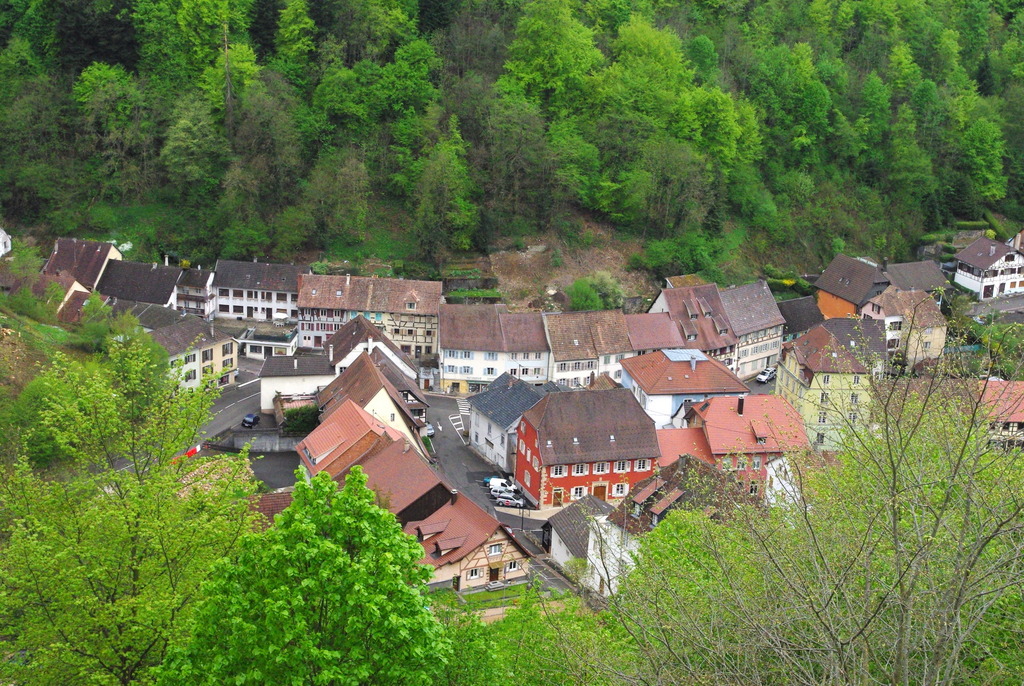


The “Château Haut” (upper castle)

The 13th-century logis (the castle’s central dwellings) was partially carved into the rock. In 1600, the fortress had six rooms, eleven bedrooms, a kitchen, a stove and a cellar. To defend it, the garrison could use many weapons: minor canons, muskets with stocks, double muskets, halberds and pikes.

It is hard to believe that there was a well in this room. In 1600, fresh water was drawn via two leather buckets fixed to a big, strong, iron chain. After the Thirty Years’ War, the well was filled in, and water had to be carried to the castle daily. The brick vault that can still be seen today is the remains of the cistern that was used for collecting rainwater.
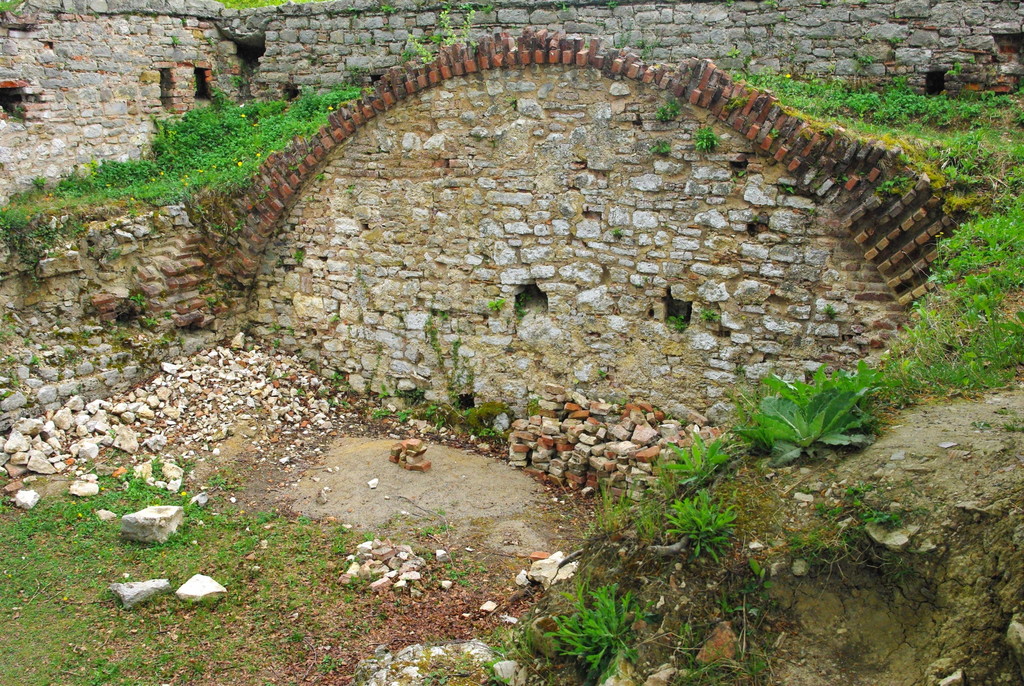
The keep tower platform
The keep tower dates from the 12th century, and its platform is accessible to the public.
The Ferrette flag flies proudly over the old town.
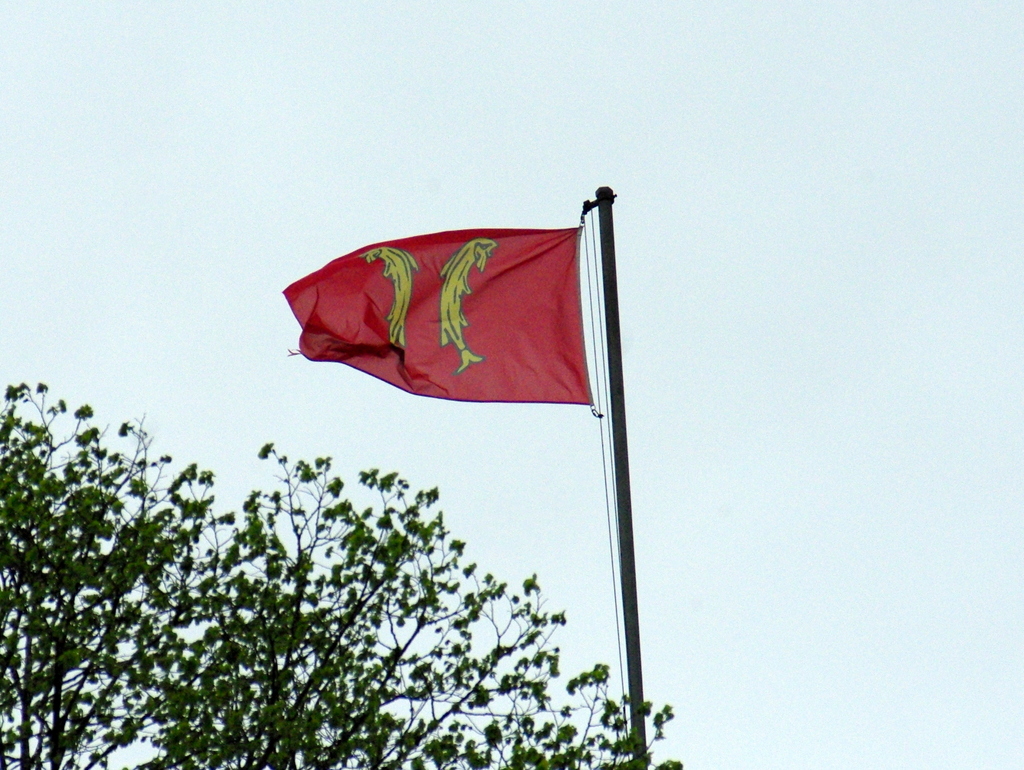
From there, visitors can enjoy a beautiful view of the rooftops of Ferrette, the Jura mountains, the Sundgau, the Vosges and the Black Forest mountains.



Although a small town, Ferrette is a place loaded with history, and we wish the village good luck with its bid for the 4th edition of the Best Loved Villages of France.
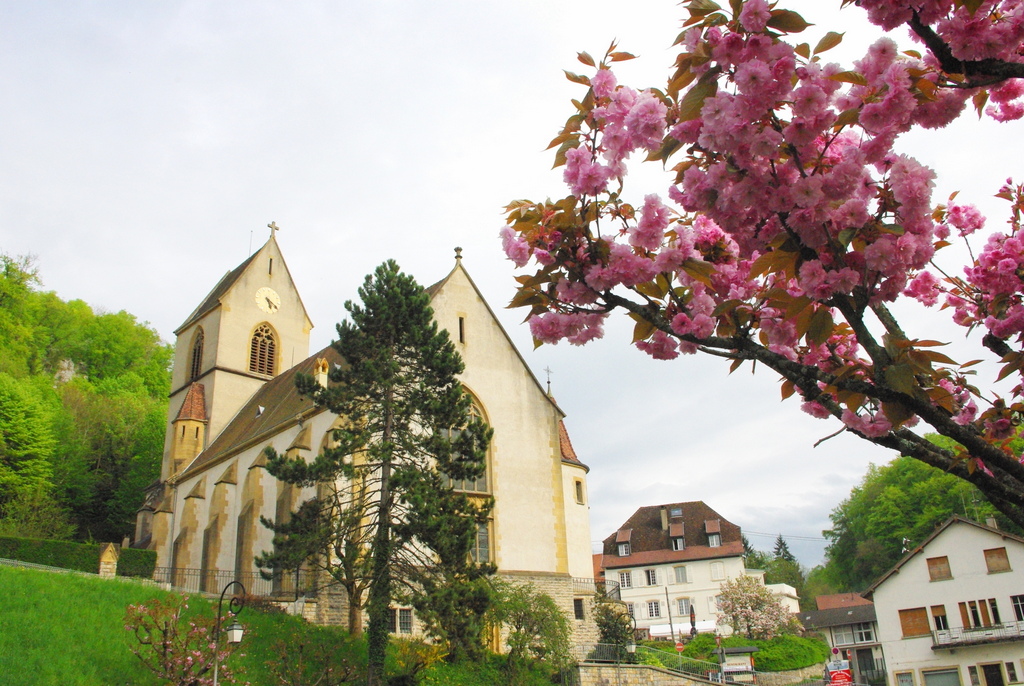
Read more about Ferrette on our French blog Mon Grand-Est.



